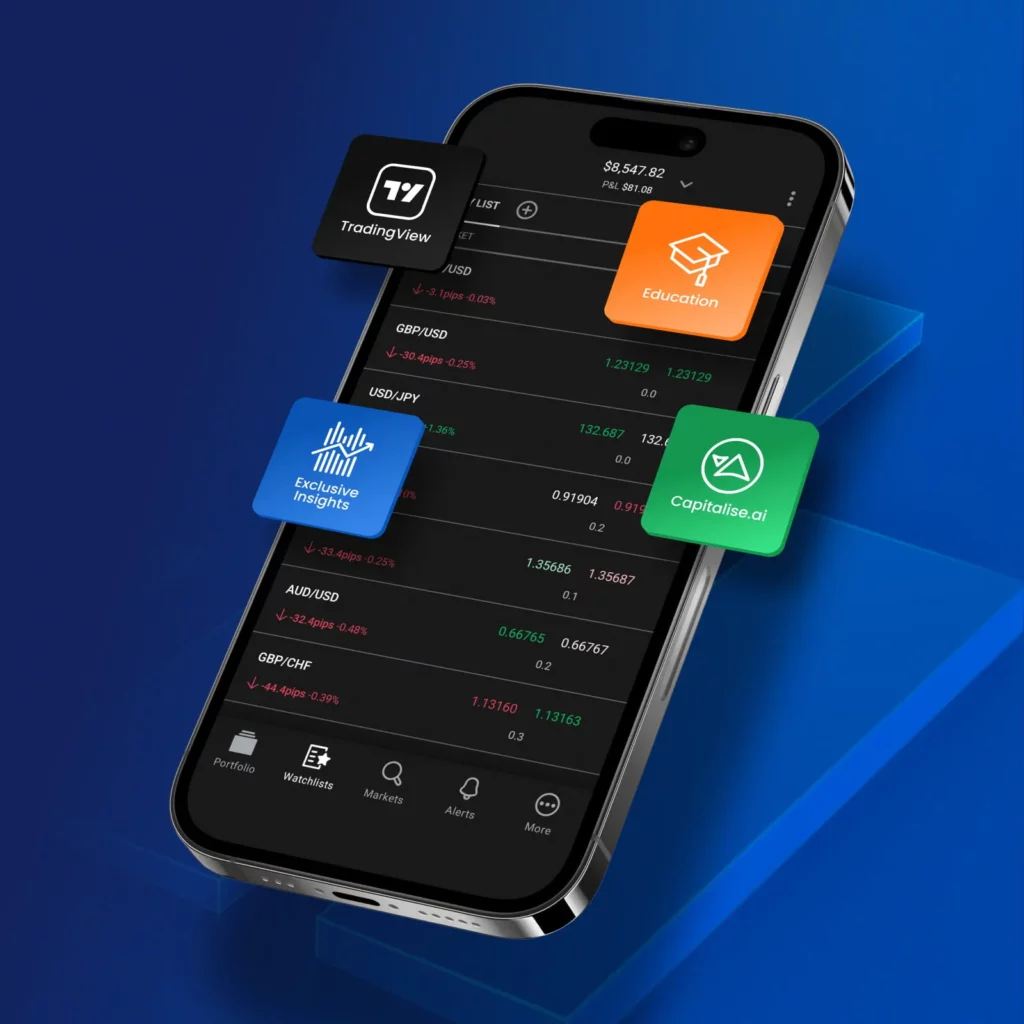Cryptocurrency trading platforms with leverage enable traders to control larger market positions while committing only a portion of their capital as collateral. These systems extend borrowed funds through margin, allowing amplified exposure to assets like Bitcoin, Ethereum, and other digital currencies. Leverage transforms small market moves into significant percentage changes in account equity, making it a powerful but risky instrument. The most reliable platforms combine regulated oversight, transparent fee structures, and efficient risk management tools. By comparing security standards, supported contracts, and leverage ratios, traders can identify which provider aligns with their trading objectives and risk tolerance.
What Is Cryptocurrency Margin Trading?
Cryptocurrency margin trading allows traders to open larger positions than their actual capital would normally permit. It involves borrowing funds from a broker or exchange to increase exposure to market movements. The borrowed portion is known as leverage, and the trader’s own deposit serves as collateral.
For example, with 10x leverage, a trader controlling $1,000 of their own funds can manage a $10,000 position. This magnifies both gains and losses, making risk control critical. Margin trading is common on exchanges that offer perpetual contracts or futures, where traders speculate on price direction without owning the underlying coins.
In practice, margin trading provides flexibility for both short-term and long-term strategies. It allows shorting—profiting from price declines—as well as expanding potential returns during rallies. However, it also introduces the risk of liquidation if the market moves sharply against the open position. Exchanges typically set a minimum margin requirement and automatically close losing trades once equity drops below that threshold.

How Leverage Works in Cryptocurrency Trading
Leverage in cryptocurrency trading operates through borrowed capital multiplied by a ratio. Common ratios range from 2:1 to 100:1, depending on the platform and asset volatility. A 5x ratio means every $1 of the trader’s balance controls $5 in market exposure.
Leverage amplifies both sides of the market. A 2% price change in Bitcoin under 10x leverage results in a 20% change in the trader’s equity—positive or negative. Because of this, understanding margin requirements and maintenance levels is essential.
The following table illustrates the relationship between leverage and margin requirement:
| Leverage Ratio | Margin Requirement (%) | Position Multiplier |
| 2:1 | 50% | 2x |
| 5:1 | 20% | 5x |
| 10:1 | 10% | 10x |
| 20:1 | 5% | 20x |
| 50:1 | 2% | 50x |
The margin requirement shows how much of the total position a trader must deposit as collateral. Platforms typically apply automatic liquidation when losses approach the collateral level, preventing further negative balance.
High leverage increases volatility within a trading account. Therefore, many professionals start with lower ratios and gradually scale up after assessing market conditions, liquidity, and personal risk tolerance.
Key Features to Compare Across Trading Platforms
Selecting a leverage trading environment requires more than just checking the highest ratios. Several operational factors determine safety, cost-efficiency, and user convenience. The following criteria help identify suitable exchanges for leveraged positions.

Security Standards and Account Protection
Security remains the foundation of leveraged trading. A reliable exchange uses cold storage for client assets, two-factor authentication (2FA), and withdrawal whitelists. Regulated brokers may also segregate client funds from operational accounts to avoid misuse.
Another element is the insurance or compensation mechanism for unforeseen breaches. Traders should confirm if the platform participates in any reserve or security fund.
Trading Fees and Funding Rates
Every leveraged position generates costs. Spot fees apply when opening or closing trades, while perpetual or futures contracts include funding rates that vary depending on long or short demand. Comparing these numbers across exchanges can make a difference in profitability, especially for high-frequency strategies.
Below is an example of common cost categories:
| Fee Type | Description | Frequency |
| Trading Commission | Charged when opening/closing a position | Per transaction |
| Funding Rate | Paid between long and short holders | Every 8–12 hours |
| Withdrawal Fee | Applied when transferring assets out of the account | Per withdrawal |
Efficient cost management keeps margin traders liquid during volatile sessions.
Supported Coins and Contract Types
The best leverage trading providers offer a range of crypto pairs, often including Bitcoin (BTC), Ethereum (ETH), and altcoins such as Solana or Ripple. Some exchanges limit margin products to major pairs, while others include perpetual swaps and dated futures.
Professionals often prefer platforms with high liquidity and multiple order types, allowing better execution even during high volatility.
User Interface and Analytical Tools
A well-organized interface improves decision-making. Built-in charting software with multiple timeframes, indicators, and drawing tools allows quick reaction to market shifts.
Some platforms integrate social trading or copy-trading functions, where less experienced traders can mirror strategies from advanced users.
Accessibility also matters: a responsive mobile terminal and stable desktop version ensure consistent order placement during market surges.
Top Cryptocurrency Platforms Offering Leverage
Several regulated brokers and exchanges provide leveraged access to cryptocurrencies through CFDs or derivatives. Each has different strengths in terms of regulation, leverage caps, and supported markets. Below is a breakdown of leading platforms offering such services.
eToro
eToro is a multi-asset brokerage that includes cryptocurrency CFDs among its instruments. It offers moderate leverage, usually up to 2:1 for retail traders, in compliance with ESMA rules. Professional clients under eligible jurisdictions may access higher ratios.
Key advantages include its copy trading feature, allowing users to replicate positions of verified traders, and a clear interface suitable for chart analysis. The broker is regulated by authorities such as the FCA and CySEC, ensuring transparency in order execution and fund segregation.
Deposits and withdrawals are available via cards, bank transfers, and e-wallets, with clear fee disclosure. eToro supports major assets such as Bitcoin, Ethereum, and Litecoin, as well as a mix of altcoins under CFD structure.
Main specifications:
- Leverage: up to 2:1 (retail)
- Account currencies: USD, EUR, GBP
- Minimum trade size: typically 0.01 lots
- Regulation: FCA, CySEC, ASIC
FXCM
FXCM is a long-standing broker offering leveraged CFD trading across currencies, indices, and crypto pairs. It provides crypto exposure via Bitcoin, Ethereum, and Litecoin CFDs with leverage of up to 4:1, depending on jurisdiction.
FXCM’s core strength lies in its advanced execution and data feeds. Traders can use MetaTrader 4, Trading Station, or API connections for algorithmic strategies. The broker publishes live spreads and slippage statistics, giving transparency to execution quality.
Security measures include segregated accounts, SSL encryption, and regulated oversight under the FCA and ASIC. The platform also integrates with third-party analytics tools, providing better trade automation capabilities.
Core metrics:
- Leverage: up to 4:1
- Platforms: MT4, Trading Station, NinjaTrader
- Supported crypto pairs: BTC/USD, ETH/USD, LTC/USD
- Regulation: FCA, ASIC
OANDA
OANDA provides a professional-grade trading infrastructure suitable for crypto CFDs alongside traditional markets. Known for its tight spreads and transparent pricing, it offers leverage levels compliant with regional regulations—typically up to 2:1 for cryptocurrencies.
OANDA’s platform stands out for precise risk management and custom indicators within its proprietary and MetaTrader environments. The broker’s data reliability and execution consistency appeal to institutional and algorithmic users.
Funds are stored in segregated accounts, and the company operates under the supervision of top-tier regulators, including the CFTC, IIROC, and FCA. Traders can monitor funding costs directly from the platform’s order ticket before execution.
Snapshot:
- Leverage: up to 2:1
- Platforms: OANDA Web, MT4
- Order types: Market, Stop, Limit, Trailing Stop
- Regulation: CFTC, FCA, IIROC
FXPro
FXPro offers CFDs on a range of digital assets with leverage up to 5:1 for major pairs. Its infrastructure supports multiple trading terminals—MT4, MT5, and cTrader—with fast execution and minimal requotes.
The company holds licenses from several regulators, including the FCA and CySEC, which adds to its reliability. FXPro uses negative balance protection, ensuring that traders cannot lose more than their deposited funds.
Analytics and educational resources are integrated directly into the interface, allowing quick market reviews. The broker’s liquidity is backed by multiple providers, maintaining consistent spreads during high volatility periods.
Key characteristics:
- Leverage: up to 5:1
- Platforms: MT4, MT5, cTrader
- Supported coins: BTC, ETH, XRP, LTC
- Regulation: FCA, CySEC, FSCA
How to Choose a Safe Leverage Trading Platform
Selecting a safe leverage provider starts with regulation. Exchanges or brokers licensed by recognized authorities such as the FCA, ASIC, or CySEC must follow strict capital and client-fund protection requirements. These institutions are less likely to manipulate data or alter execution conditions.
Traders should also assess liquidity, supported order types, and customer verification standards. A transparent margin policy helps avoid forced liquidations during sharp price movements. Reading the fine print regarding overnight fees, spread widening, and funding intervals reduces unexpected costs.
Consider the following checklist before opening an account:
- Verify regulatory license and jurisdiction.
- Confirm fund segregation and negative balance protection.
- Review leverage limits and margin call procedures.
- Compare withdrawal methods and transaction fees.
- Check platform uptime and order execution statistics.
Platforms with strong compliance frameworks and real-time auditing offer better protection, especially for leveraged crypto positions that fluctuate rapidly.
Tips for Managing Risk When Using Leverage
Leverage magnifies exposure and compresses error tolerance. Capital protection comes first, then return targets. The safest approach limits position size, caps leverage, and treats liquidation as a last resort, not a tool.
Practical checkpoints before entry:
- Risk a fixed fraction of equity per trade (often 0.5–1%).
- Use isolated margin on volatile pairs to ring-fence losses.
- Map the invalidation level on the chart before picking size.
- Pre-define exit rules for both profit and loss.
- Avoid stacking correlated positions during event risk.
Setting Stop-Loss and Take-Profit Orders
Stops anchor discipline. A stop belongs where the trade idea fails, not at a round number. Many professionals place stops beyond structure: outside a swing high/low, below a demand zone, or beyond an ATR multiple to reduce noise hits.
Implementation notes:
- Link stop distance to volatility. For example, 1.5–2× ATR on intraday setups.
- Use reduce-only take-profit orders to prevent accidental size increases.
- Scale out in portions (e.g., 50% at 1R, trail the rest) to lock realized PnL and let trends run.
- On derivatives with funding, factor the carry cost into the take-profit target.
- Refrain from moving stops farther once placed; tightening is fine when structure confirms.
A simple sizing formula ties risk to stop distance:
Position size = (Account risk $) / (Stop distance $ per coin)
That keeps loss constant even when volatility changes.
Using Low Leverage Ratios for Control
High ratios look tempting, yet they compress the liquidation buffer. Lower settings extend survival and keep psychology steady.
Actionable rules:
- Cap leverage at 2x–5x for new systems; raise only after a large sample of trades.
- Favor isolated over cross margin on new pairs to avoid account-wide cascades.
- Add to winners, not losers. Use post-only limit adds to avoid taker fees and slippage spikes.
- If price chops, cut size and widen stops; avoid “revenge” scaling after a string of losses.
- Keep a minimum cash cushion to meet maintenance margin during abrupt wicks.
A steady approach beats a few oversized bets. The objective is repeatability under stress.
Advanced Tools and Order Types
Modern crypto venues list order logic beyond market and limit. Correct usage sharpens entries, protects exits, and lowers impact on the book.
Key mechanics:
- Stop / Stop-Limit: convert momentum into entry; avoid chasing with late markets.
- Trailing Stop: follows price by a set distance; good for trend riders who dislike micromanagement.
- OCO (One-Cancels-the-Other): pairs a limit take-profit with a stop; whichever triggers first cancels the other.
- Post-Only: posts liquidity or cancels; used to capture maker rates and reduce slippage.
- Reduce-Only: guarantees that execution can only decrease exposure.
- Time-in-Force (GTC, IOC, FOK): controls how long orders rest; FOK helps avoid partial fills during thin liquidity.
- Bracket Orders: entry with attached stop and target; useful for systematic execution.
- TWAP/VWAP: slices orders over time or volume to limit footprint on illiquid pairs.
- Hedge Mode (where available): holds independent long and short legs for basis or spread tactics.
Analytics worth adding to the workflow:
- Liquidity heatmaps and order book depth for detecting spoof-like walls.
- Funding term structure across venues to spot crowded carry.
- Basis tracking between spot and perpetuals/futures for mean-reversion ideas.
- Volatility measures (ATR, historical vol) for stop placement and premium timing.
- Event calendars for macro and crypto-native catalysts.
Combine these tools with a written playbook. The market rewards consistency, not improvisation.
Frequently Asked Questions
What is the difference between margin, perpetuals, and dated futures?
Margin refers to borrowing against collateral to trade a larger notional. Perpetuals are derivatives without expiry that anchor to an index via funding payments. Dated futures expire on a set date and settle by cash or index price. All three can be traded with leverage; carry mechanics differ.


